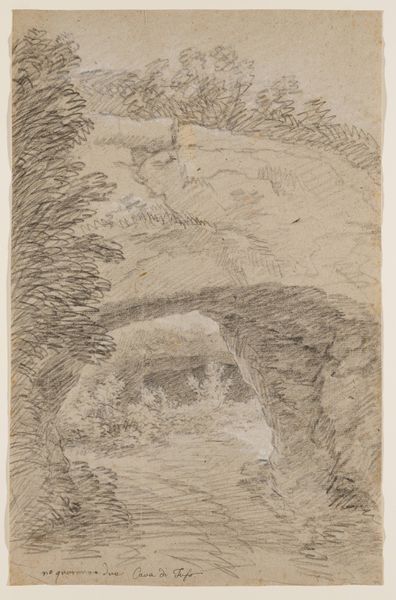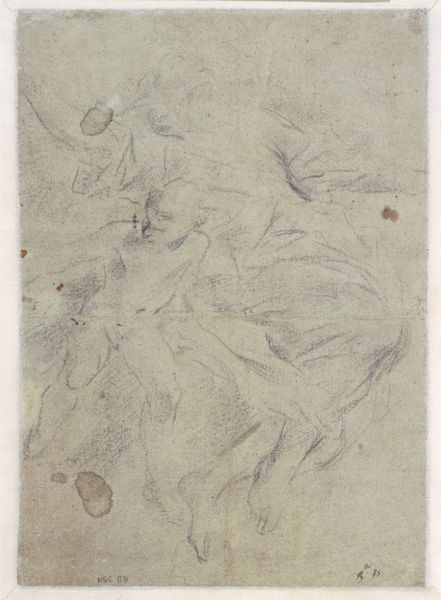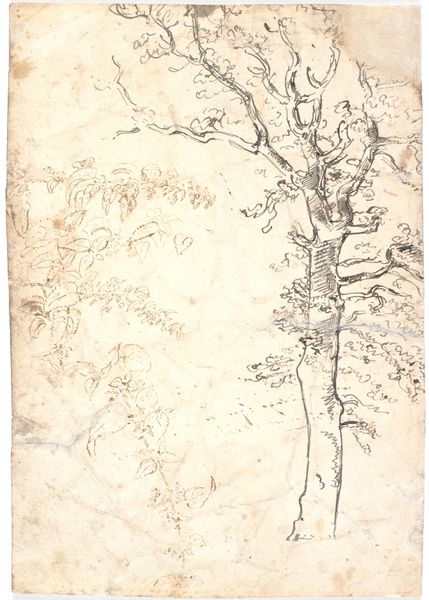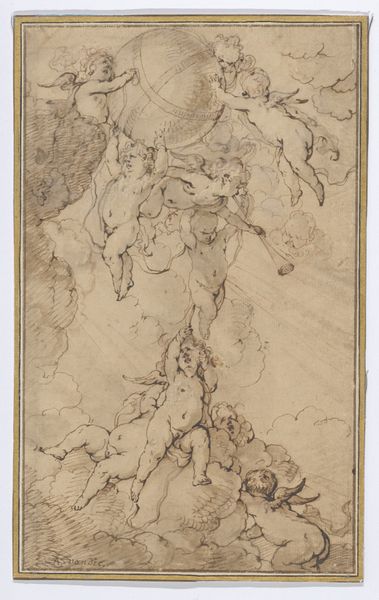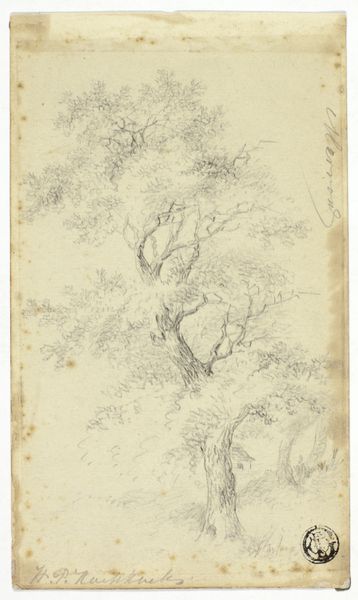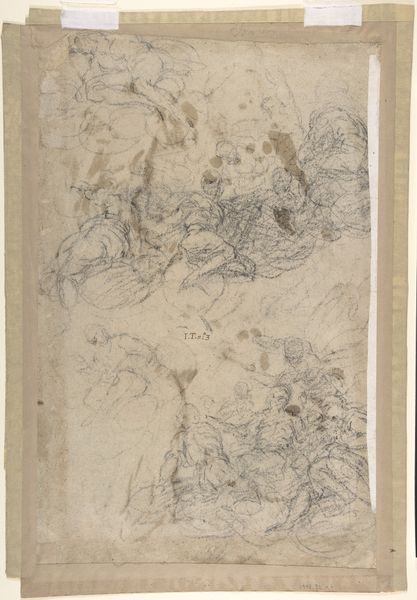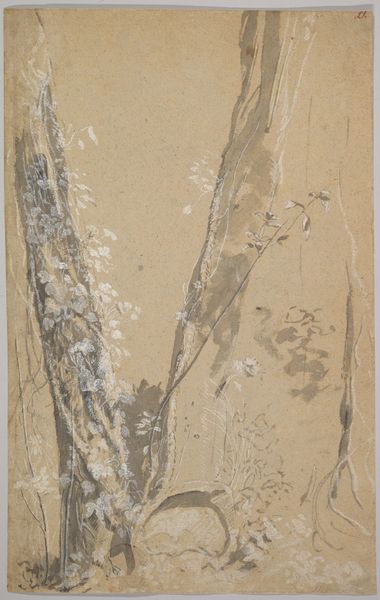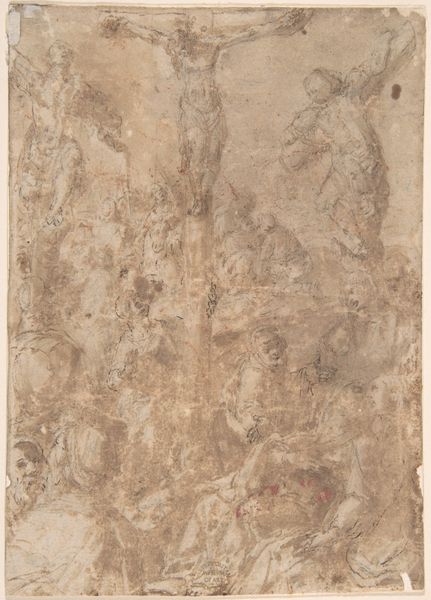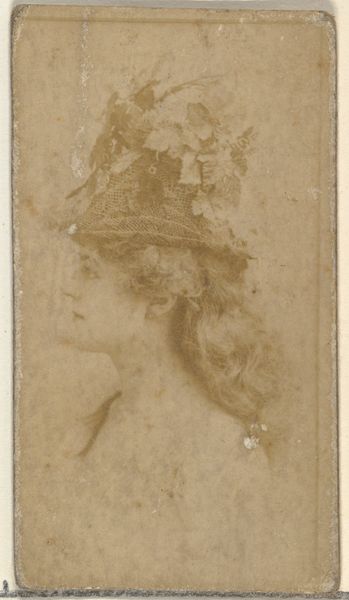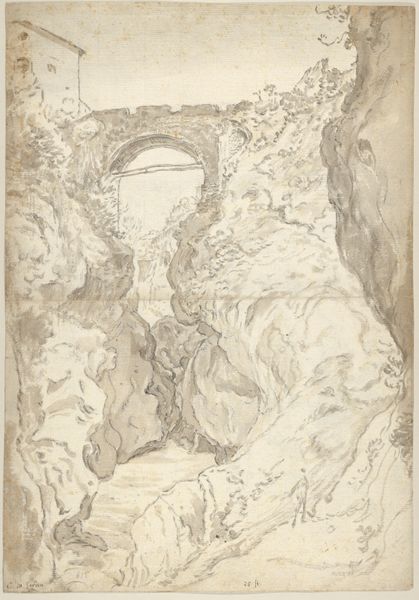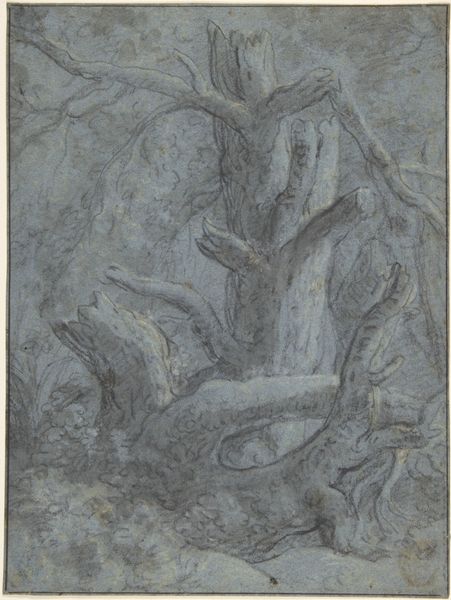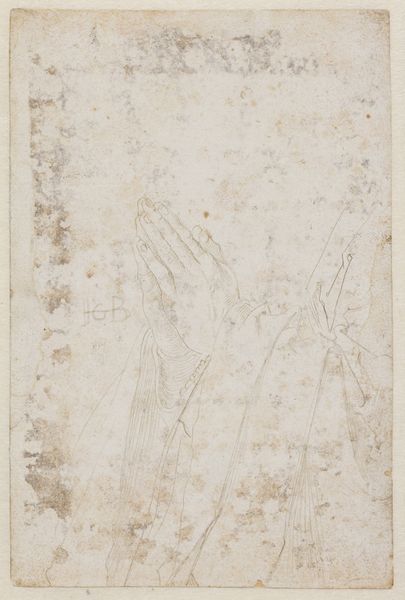
drawing, tempera, print, paper, ink
#
drawing
#
ink painting
#
tempera
# print
#
figuration
#
paper
#
ink
#
coloured pencil
#
history-painting
Dimensions: 3-1/8 x 2-3/8 in. (7.9 x 6.0 cm)
Copyright: Public Domain
Curator: Looking at "Cain Slaying Abel," a drawing by Francesco Allegrini created sometime between 1624 and 1663, the first impression is almost ghostly. The scene is rendered in delicate washes of ink, conveying a terrible act with a surprising lightness of touch. Editor: The lightness comes, I think, from its seeming lack of detail, which emphasizes Allegrini’s draftsmanship, really showing the active hand in the layering of ink, of the building-up of forms through tonal values, making it not so much “ghostly” as active with potential. Curator: Indeed, the dynamism you note adds to the emotional weight. This drawing doesn't merely depict fratricide; it grapples with the foundational myth of human violence. Abel’s posture is so telling, offering no resistance as he is consumed, perhaps inviting the violence as resolution to this primordial, human drama. Editor: Yes, and let's not overlook that it’s a drawing on paper. In considering Allegrini's technique, that fluidity must come from somewhere: The material ease of working with ink and paper, versus the greater demands of oil painting on canvas, might inform how rapidly the narrative tension can unfurl. How else would he achieve the airy depth? Curator: That depth enhances the dreamlike quality, imbuing the scene with psychological resonance. I notice how Abel's positioning reminds me of depictions of the crucified Christ – this parallel transforms Abel into a figure of blameless sacrifice. The drawing then ceases to be merely a historical scene, but a cultural representation of all violence to come. Editor: Right, and by using readily available materials—paper, ink, maybe tempera—Allegrini democratized the potential to depict such stories. It’s portable knowledge, accessible symbolism, and therefore open for wider consideration and perhaps dissent, outside the grand tradition. Curator: That’s interesting because I agree this artwork does so much with so little—and perhaps invites us to confront uncomfortable truths about ourselves, and the darkness within our cultural heritage. Editor: Well said. This deceptively simple drawing really exposes layers and processes beyond the aesthetic.
Comments
No comments
Be the first to comment and join the conversation on the ultimate creative platform.
